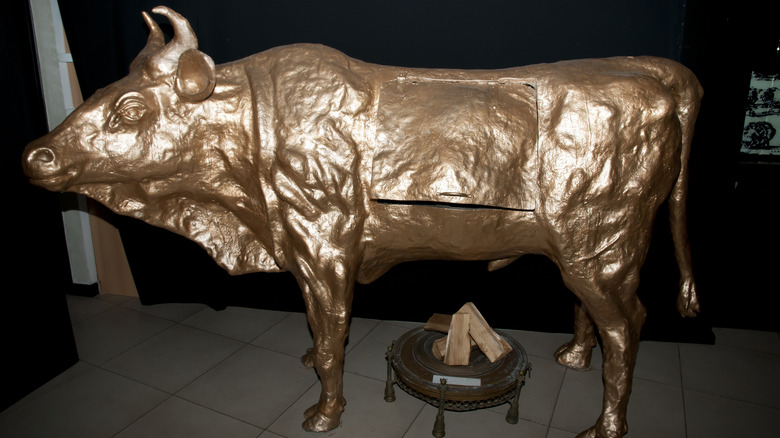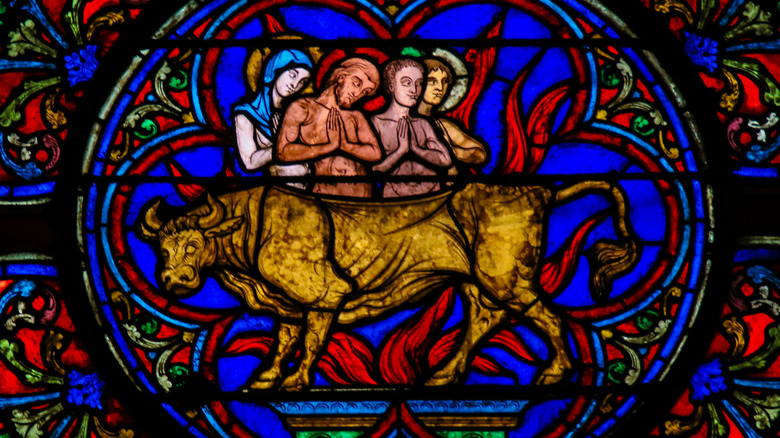How The Brazen Bull Became One History's Darkest Forms Of Torture
Human creativity has produced a myriad of concepts and technologies that have bettered our species. Unfortunately, the human mind is almost as commonly tasked with the complete opposite. History has created countless iterations of torture in cultures across the world, and one of its more infamous implementations was during the Spanish Inquisition. Here, torture was used to leverage information and religious/ideological conversion, often leaving the victim permanently maimed if not dead. In other instances, death was the primary goal, with sadistic vengeance driving perpetrators to make the experience as agonizing as possible.
Immolation is one of the methods employed to this end, as figures such as Joan of Arc can attest. Individuals such as her were typically burned at the stake, but people in other cultures met their fiery demise in an even more sinister fashion. The brazen bull represents one of the few methods of execution where the sole aim was to make the victim's agony — rather than their mere death — a source of enjoyment for spectators (via All That's Interesting).
The brazen bull was a symbol of tyranny for ancient Sicilians
As per ancient historians, the brazen bull originates in Akragas, an ancient Greek colony on the coast of Sicily. The tyrant of the city, Phalaris, is recorded as having regularly tortured and executed his subjects. To satisfy his twisted desires, he commissioned the sculptor Perilaus to construct a bronze bull within which he could have people burned alive. The end result fits this description, with the sculptor having added tubing that permitted the victims' screams to escape, modulating them to sound like those of a bull (via Rome on Rome).
In an instance of successive irony, both Perilaus and later Phalaris were apparently victims of the bull themselves — the former when he was tricked by Phalaris into "testing" the device's sound production (though some sources say he was removed before dying) and the latter when the Akragians revolted against him (via Livius). The original device was then cast into the sea, but the concept managed to persist. In later centuries, several Roman emperors were accused of utilizing their own brazen bulls against early Christian martyrs, such as Saint Eustace and his family (pictured above). As is the case with the Akragas story, however, these claims are of debatable historic accuracy.

